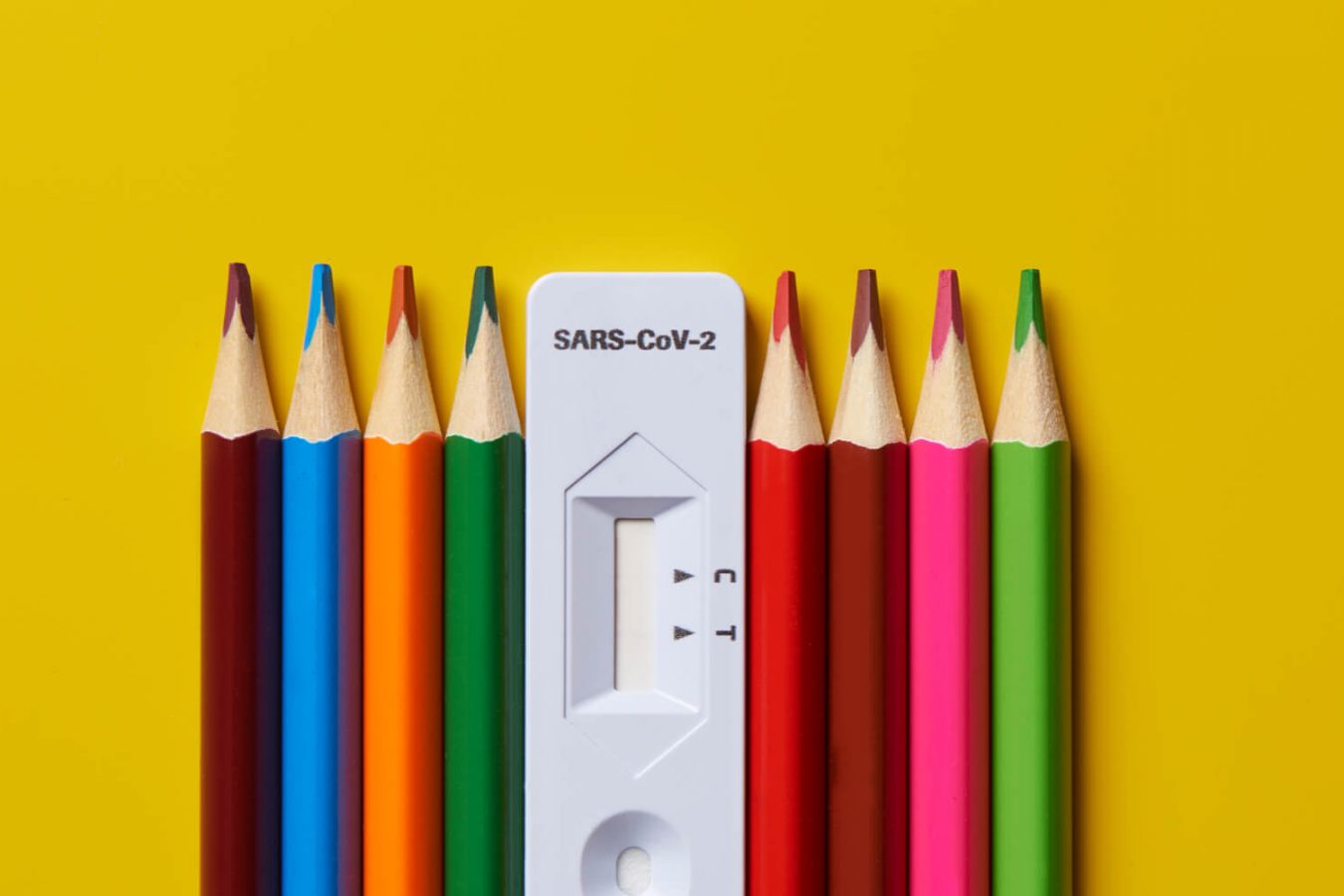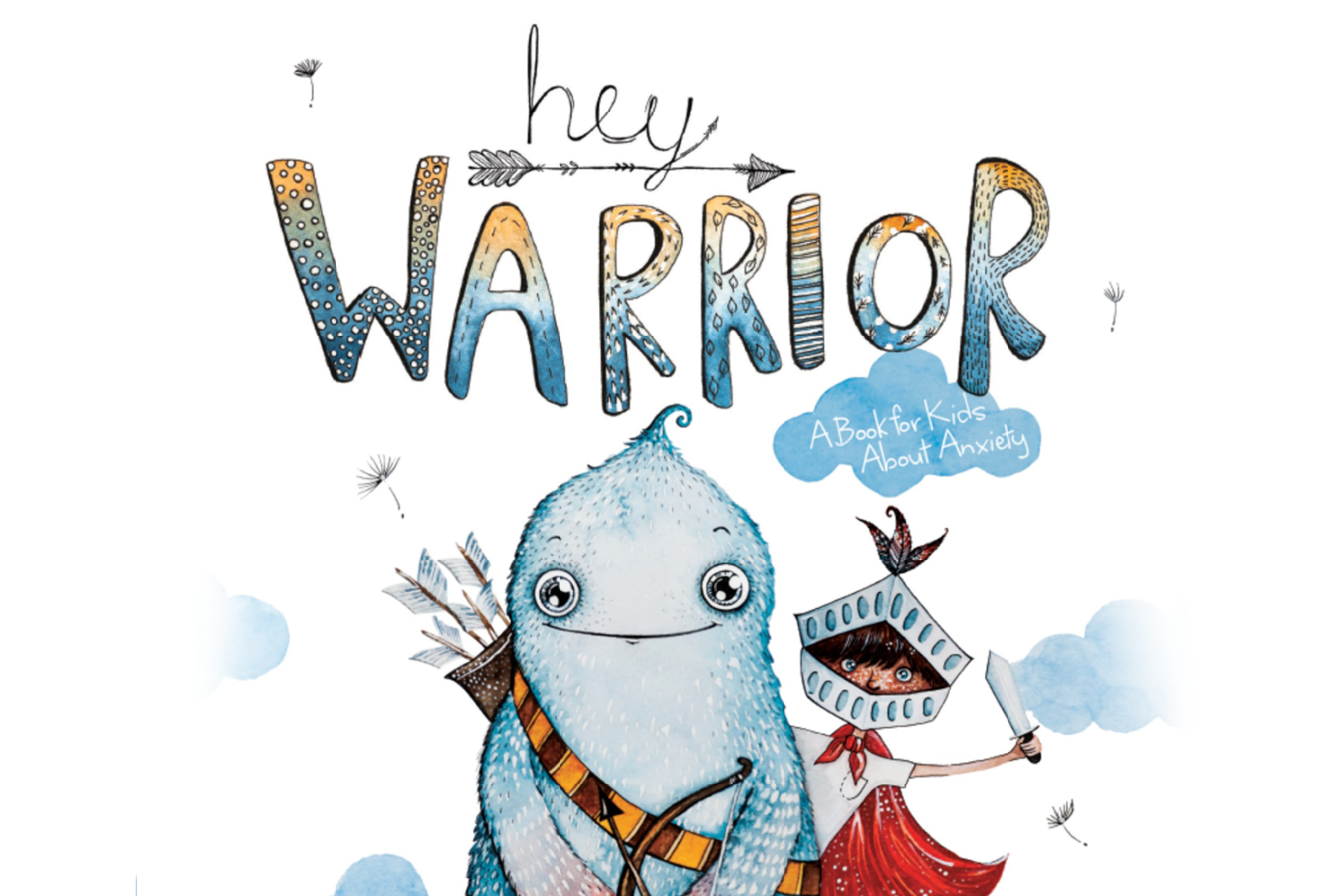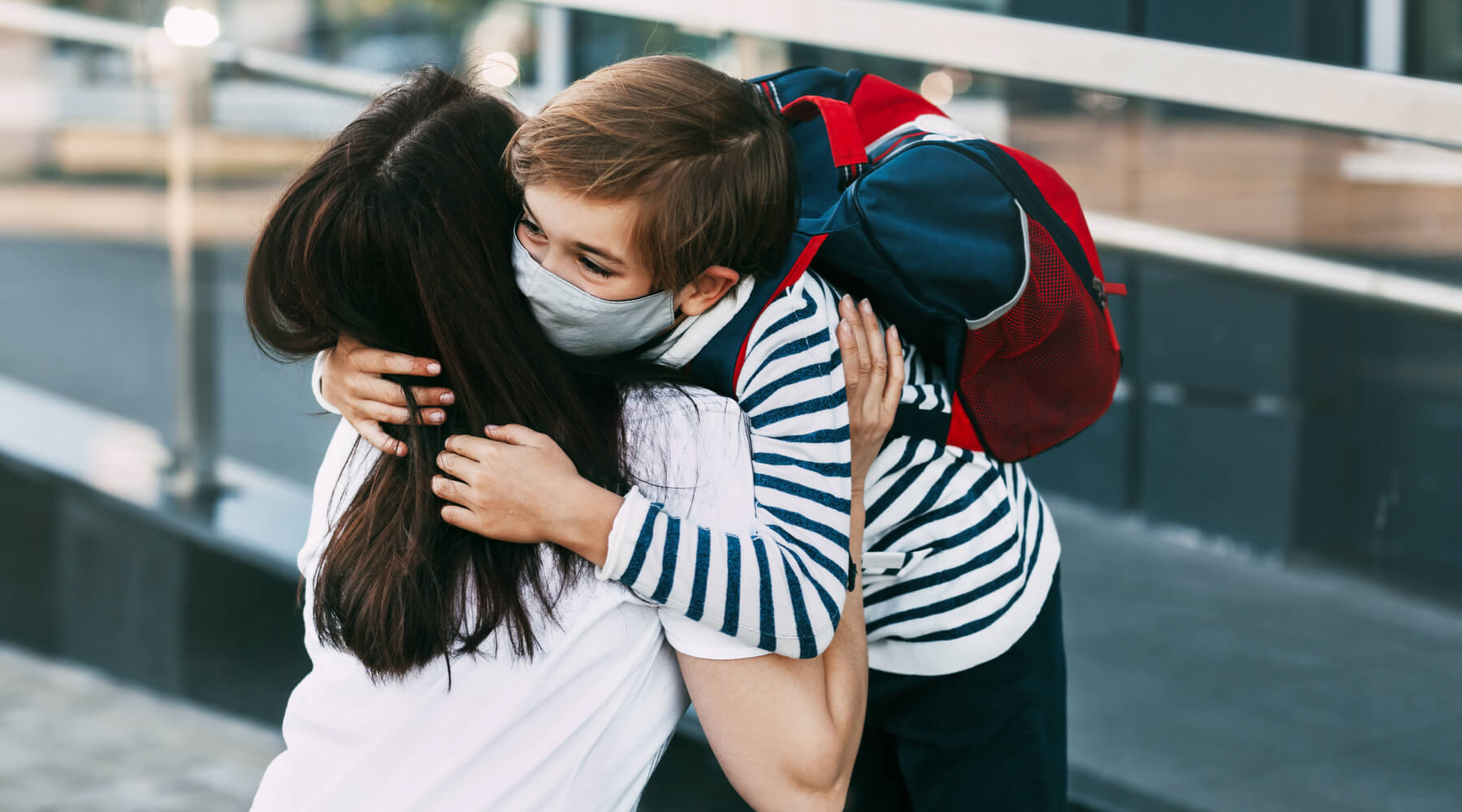
The return to school can mean anxious kids. Karen Young, psychologist and creator of Hey Sigmund, shares ways to help children through school anxiety and open the way for brave.
Anything that takes children and teens away from their important adults comes with the potential for anxiety to steal into their world. For even the bravest of hearts, this can cause more distress than it deserves to, especially in relation to school. As intrusive as school anxiety can be, it is not a sign of dysfunction or breakage. It is one of the most human experiences, and it can be managed.
First, the most important thing
Supporting any avoidance of school will make anxiety bigger. The amygdala, the part of the brain responsible for anxiety, only learns from experience. Once it has associated school with threat, this will continue to drive anxiety until there have been enough experiences of that anxiety giving way to calm.
This can be tough. Often, anxiety will get worse before it gets better. This can make anxiety at school feel fierce, which can understandably move a loving parent to remove children from school before anxiety has had a chance to ease. This makes sense – there is nothing that feels okay about moving our children towards the things that are causing their distress, but here’s the rub. The more that children avoid school, the more the brain will learn that the only way to feel calm and safe is to avoid school. This will catastrophise school and make anxiety bigger.
This is one of the things that makes anxiety so difficult to deal with. I’ve been there myself as a parent, and I know how heart crushing it is to watch a child you love so much, in distress. Something that can help is understanding the important job anxiety is trying to do, and the important role you play in strengthening them against it.
Anxiety is not a sign they can’t cope. It is a call to action. A call to courage. Sometimes it is a call to retreat. Sometimes it is a call to move forward. The hardest part for our children is knowing the difference, which is why one of the best ways to support children through anxiety, is to help them make the call.
To do this, we will often need to ‘go first’ with calm and courage. This will mean calming our own anxiety enough, so we can lead them towards things that are good for them, rather than hold them back when those things feel too big.
The very thing that makes you an amazing parent, can also get in the way of moving them through anxiety. As their parent, you were built to feel distress at their distress. That distress works to mobilise you to keep them safe. This is how it’s meant to work. The problem is that sometimes, anxiety can show up in our children when it doesn’t need to. The good news is that you were also built to move them through this.
Why anxiety at separation makes sense
We are wired to feel safest to our important people. This is a brilliant part of our human design. When children (or any of us) are faced with separation, anxiety happens to move us to restore proximity to our ‘tribe’. We are safer in groups, and children are safer when they are with bigger, stronger, braver humans, especially when that adult so attached to them, they will do everything they can to keep them safe.
If anxiety only happened in response to real threats, this design would work beautifully, but this just isn’t how anxiety works. Anxiety also happens in response to things that are important or meaningful. School is one of those important, meaningful things but it comes with its own challenges. One of these is the need for separation from important adults, and this will potentially (understandably) breathe life into anxiety.
As much as children are wired to feel anxious when they are separated from their important people, they are also wired for courage and resilience. We can nurture their capacity to do hard things by making sure that whenever they experience anxiety, they also have the opportunity to experience being brave in the face of that. Often, this will mean taking avoidance away as an option.
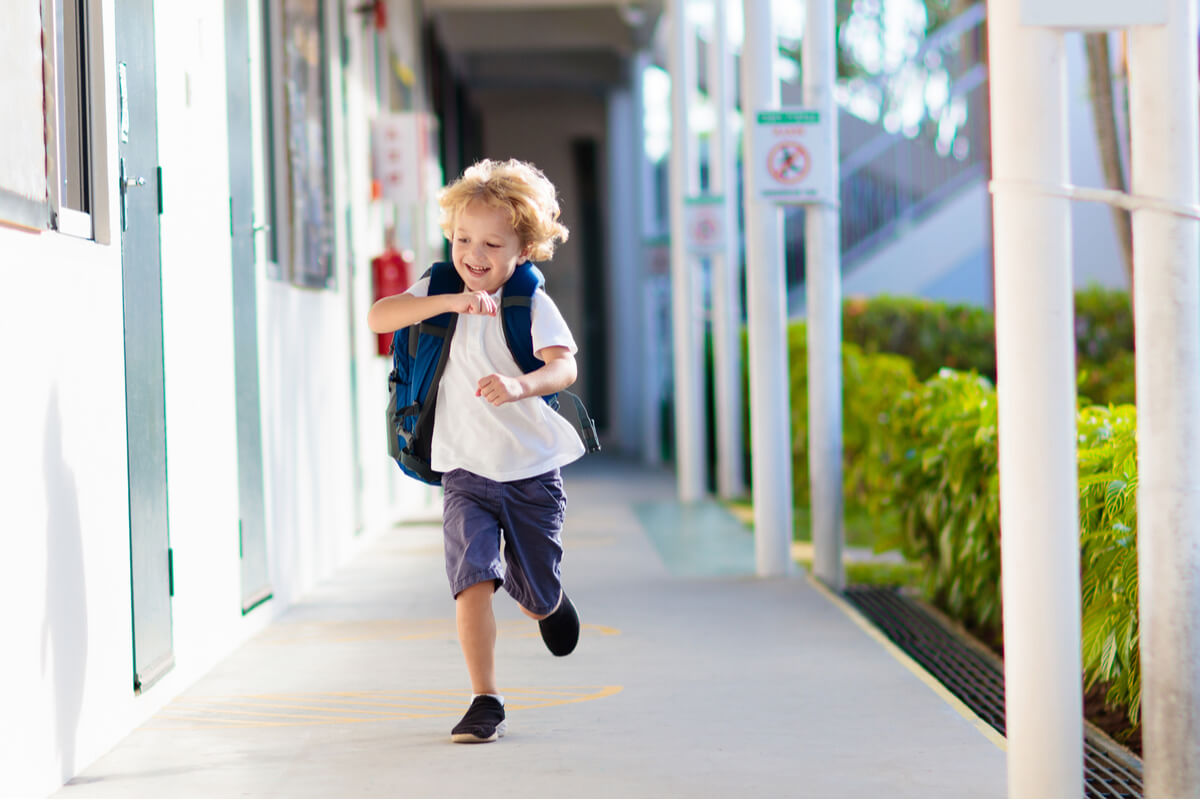
Take the ice cream off the table
Sometimes, when decisions are too big for our children, the most loving thing we can do is to take that decision out of their hands.
Think of it like this. Let’s say your child has ice cream every night for dessert, but you want them to choose an apple instead. You’ve talked with them about all the reasons they should choose an apple over ice cream. Then, dessert time comes around and you put the ice cream on the table, hoping they’ll say ‘nup’ to the ice cream, and choose the apple. Of course, they choose the ice cream.
You know that if you take the ice cream off the table, there will be a truckload of trouble coming your way. The battle will be mighty, not just tonight, but probably tomorrow night and the next night and the night after that. Maybe this will go on and on for a couple of weeks. Ugh. Things would be so much easier if they choose the apple themselves right? There’s a really tough decision to make, but you’re leaving the decision to them. When the decision is a hard one, as long as both options are available, it’s understandable that they will choose the easier option. The brutal truth of it all is that the only way to stop them choosing the easy option is to take it off the table.
We are asking them to do something really tough – to go to school – but as long as there is an option for them to avoid school, they will understandably be driven to choose this option. This has nothing at all to do with bad behaviour, and everything to do with a brain that has associated school with a lack of safety and will put up a ferocious fight (or flight) to avoid it.
This will translate into avoidance behaviour (not getting ready, refusal), big feelings, tantrums, aggression, tears, yelling, tummy aches, headaches, and feeling sick at school time. Until there are enough opportunities for anxious children to reach the calm that is on the other side of their anxiety, their anxiety will drive them to avoid.
We need to take avoidance of school off the table. This won’t be easy. In fact, it will probably break our hearts on too many days, but remember why you are doing it. The only way through anxiety is straight through the middle. Anxious brains are strong brains and they will not let go of the fight easily, which is why for a while, you’ll need to be stronger. Of course, if there are other real threats at school, such as bullying, a screaming lack of emotional generosity from the teacher, or environmental sensitivities, these need to be dealt as best we can to clear their way towards brave behaviour.
What are you really protecting them from?
Somewhere inside them, kids will know that school is safe enough. What they will also be aware of is that whenever they think about school, they get anxious thoughts, anxious feelings, maybe a sick tummy, a racey heart – it just starts to feel as though something bad is going to happen. Often, what that fierce drive to avoid is more about avoiding the thoughts, feelings and physiology of anxiety, than it is about avoiding school.
It is understandable that any loving parent might sometimes surrender to this, and let their child stay home, ‘just for today’, but this will always make anxiety worse tomorrow. When the drive to protect them feels overwhelming, ask yourself, ‘What am I really protecting them from? Am I protecting them from a real threat, or the thoughts, feelings, and physiology that come with anxiety? Then ask, ‘Will my next move build their world, or shrink it? Will it grow them, or hold them back?’
The question isn’t, ‘How do I get rid of their anxiety?’, but, ‘How do I help them feel a little bigger in its presence?’
One of the most powerful ways to do this is to change their relationship with anxiety, from anxiety being a brutal beast of a thing (even though that’s how it feels sometimes) to anxiety being their fierce protector – one that will fight with warrior daring to keep them safe, but sometimes too much when it doesn’t need to. When we change the story about anxiety, we can change their response.
Then, we add in strategies and information, and we shift their focus from the ‘threats’ (separation from you) to the important, meaningful things that anxiety is getting in the way of. They might take time to buy into this, and that’s okay. For a while, we’ll need to believe it enough for them. In the meantime, we build them big, so they can feel mighty enough even when they feel anxious – anxious AND mighty enough to move forwards, little step by little step.
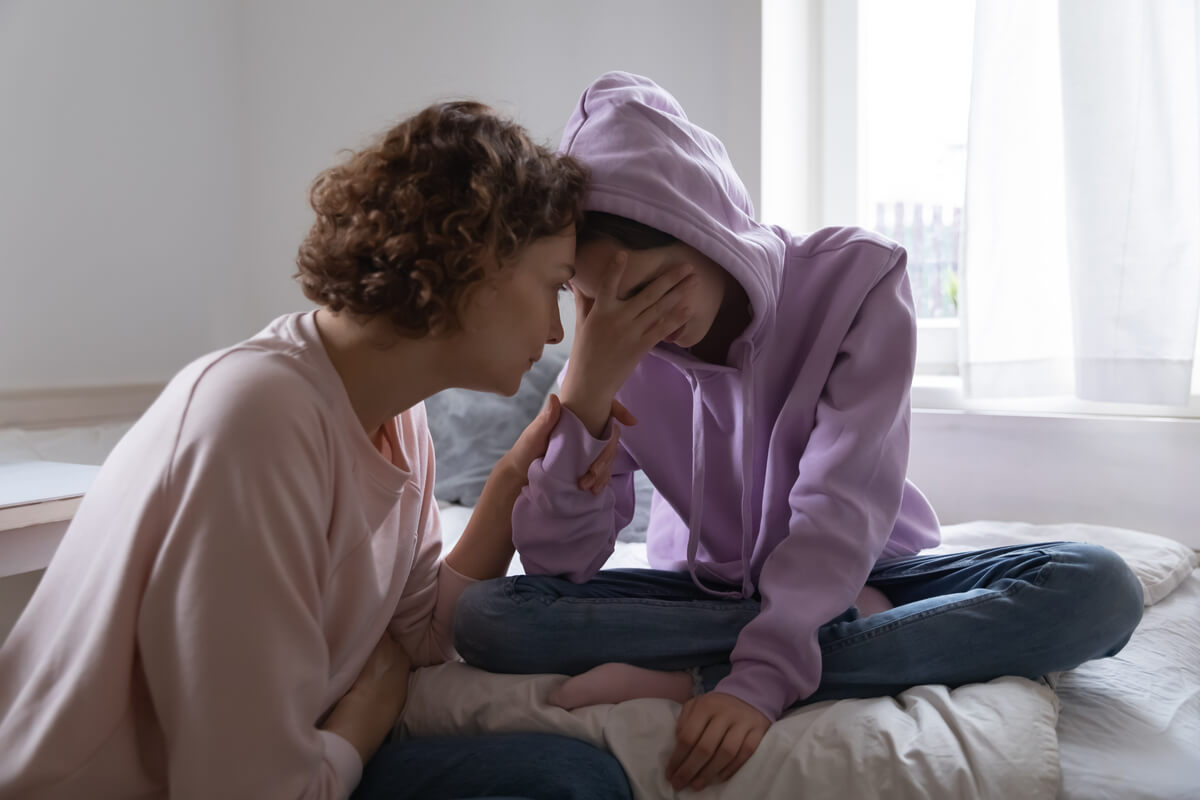
How to help them feel safe, even when they aren't with you
You know your child best, so think of this as a toolbox. Here are some strategies to draw on:
Let them know that what they are feeling makes sense.
Their anxiety makes sense. They are doing something tough. This can register as threat in the brain, and it will work hard to keep them safe by pushing them to avoid. It’s just what we humans do sometimes – and all of us do it at some time. It’s so interesting to me that something which unites us as humans can make us feel so alone when it hits. Kids need to know that anxiety has nothing to do with strength, courage, character, and it is absolutely not a sign that they can’t cope. It’s a sign that they are about to something brave, important and meaningful – and that can be hard sometimes.
Play ‘matchmaker’. Facilitate the relationship between them and their teachers
The best way for children to feel safe with another adult is for their important adult to facilitate that relationship. This might mean having a conversation with your child’s teacher so you can pass on the good things they said about your child and the good things your child said about them. (‘Ms Frizzle said she really loves having you in her class.’)
Let the goodbye be confident, loving, and quick
As long as you are still with them, their amygdala (the part of the brain responsible for anxiety) will have hope that the separation won’t happen, and it will keep the fight or flight response going. Once you leave, the amygdala registers futility. Only then can your little one’s brain and body rest. The neurochemical surge that is driving the physical, emotional and behavioural symptoms of anxiety will start to neutralise and their anxiety will start to ease. The sooner this happens, the sooner your child can settle and get on with the day. There might be big tears when you leave, and that’s okay. These tears are a sign that the brain has registered futility, and is moving to adaption, which lies at the heart of resilience. It’s never easy watching someone you love so much in distress, but remind yourself that they are safe, that the tears will pass quickly, and that you are providing the experience that will build resilience and courage, and show them they can do hard things.
Let them feel your strength
Our children need to feel our leadership. If you were lost in the wilderness, you would want someone who had a plan, not someone who was unsure and needed you to confirm the direction to take next. Speaking with certainty opens the way for them to feel confident in our ability to keep them safe, and our assigning of other adults to take care of them. It’s important that this is said in a loving, ‘I’ve got this’ way, rather than an authoritarian, ‘Do this or else’ kind of way. Think of it as letting them feel that you have gone out in front, taken a good look around to make sure it’s safe, and now you’re coming back with the all-clear. Tell them the plan but frame this as statements, (‘This is what’s happening’) rather than questions, (‘Don’t you think it would be best to go to school?’).
‘I know that today feels big for you. Here’s what’s going to happen my darling. I’m going to make you your favourite breakfast – whatever you like, order up Champ. Then, you’re going to get dressed and I’m going to drive you to school. When we get there, I’m going to walk you to your classroom, give you a big squeeze, and say goodbye. I know your teacher/the school will take really good care of you. They’ve been waiting for you to come back. I spoke to your teacher and she can’t wait to have you in her class again. The best part though will be when I get to see you this afternoon and hear all about your day. I can’t wait to hear all about it!
Your tone matters
Let your tone be warm, loving, strong and melodic where you can. A low monotone voice is more likely to register as a threat. It’s the tone of a growly predator in the wild, and one we’re wired to be wary of.
Let them know they will be taken care of
If they plead with you to let them stay home, acknowledge their feelings, validate how hard it is, and reaffirm that you know they will be taken care of at school. You don’t need their agreement, but they will need you to be strong enough for both of you. If you’re feeling all the big feels when you drop them off, fall apart in the car if you need to. Cry, scream, turn the music up or call a friend to vent about how rubbish it all is (because honestly, it feels like rubbish). Just make sure that as long as you are with them, they can feel the safety and strength of you.
Focus on the next ‘hello’
Anxiety will focus them on the threat – the separation. Help usher their ‘brave’ into the light by focusing them on what they want – the next time they get to see you. Give them a kiss, a cuddle, and point them to the next ‘hello’ – ‘Bye my darling. Love you so much. Can’t wait to see you this afternoon and hear all about your day,’ or, ‘You’re going to stay at school today, I’m going to go to work, and then this afternoon I’m going to pick you up and take you home. Let’s go for a play in the park when we get home.’
Sometimes all you can do is ride the wave
If they feel overwhelmed, and if their feelings take up all the space in the room, ride the wave with them until they start to feel calm. Breathe, be still, and stay in the moment so they can find their way there too. Their calm will start with yours. Let them know you get it, that you see them, and that you know they can do this. They won’t buy it straight away, and that’s okay. The brain learns from experience, so the more they are able to find their way through anxiety back to calm, the easier it will get.
They are not their behaviour, and neither are you
Try not to let the symptoms of their anxiety disrupt the connection. They might get really angry, really sad, or behave in really terrible ways. This is not a measure of their capacity to cope, your parenting, or who they are. It’s anxiety.
What you focus on becomes powerful
What we focus on becomes powerful, so make room for their big feelings, and then usher their strengths into the light. ‘I know that even though you feel anxious, you can do hard things. I’ve seen you do it before. I see you do it all the time. I know this is hard, and I know you can do this.’
Align yourself with their brave over their fear
When your child is anxious or distressed, your anxiety and distress will be triggered as well. Their anxiety is trying to hold them back from danger, but they need us to not buy into that. Whenever we support avoidance, we align ourselves with their fear. They need us to align ourselves with that part of them that knows they can be brave enough, and that part is there in each of them.
And finally...
One of the tough parts of parenting a child who feels anxious sometimes is knowing when to push them gently towards brave behaviour, and when to let them take comfort somewhere warm and bundled. Even the gentlest nudge forward by you might not feel that gentle for them. Sometimes it can just feel cruel for both of you.
But you can see around the corners that they can’t. And you can see their strength, and their resilience, and their courage. You know it’s there, in them, and you know they can do hard things – they’re amazing like that – but sometimes you need to believe it enough for both of you.
The move towards brave behaviour and away from anxiety is a process, and not always a smooth one. Our kids need us to see them and hold a safe place for them, but they also need us to believe in them and to sometimes lead the way. An anxious brain is a magnificent, powerful brain – and so strong. When anxiety is involved, the need for our kids to avoid or flee can be seismic, but our belief in them can always be stronger.
When their anxiety is screaming at that maternal or paternal need in you to keep them safe, ask, will my response build their world or shrink it? Do I believe in them, or do I believe their anxiety? And always, of course, go gently. Building brave, beautiful humans into braver, stronger, more resilient ones takes time, and that’s okay.
About Karen Young
Karen Young is a psychologist and creator of the online resource, Hey Sigmund. She has worked extensively with children teens and families, and in educational and organisation settings. She has lectured and has a Masters in Gestalt Therapy. Through her work with children, teens and families, she has ‘learned the power of solid information when it is placed in the solid, loving hands of parents or any important person in the life of a child.’
This article is reproduced with permission, and you can read the original on Hey Sigmund.
Like this post? Please share using the buttons on this page.
Get our updates direct to your inbox